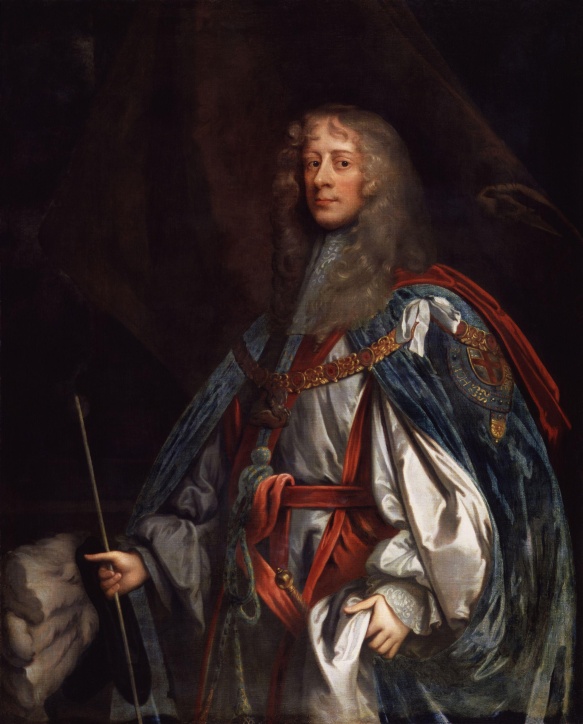
James Butler (1610-88), the Earl of Ormonde, was among the most prominent royalist leaders who survived to enjoy the Restoration of the Stuarts to the throne. An Anglo-Irish nobleman of Catholic ancestry but Protestant persuasion, he had joined the hard-fisted administration of the Duke of Strafford in 1633, and was deeply involved in the confiscation of Catholic lands and their distribution to English immigrants. When civil war broke out in Ireland in 1641, he successfully held off both Parliamentary and Confederation forces. In 1646 he almost brought the royalists and Catholics together, but was thwarted by the papal legate, Rinuccini, who had brought arms, ammunition and bad advice to Ireland. Frustrated by his feuding allies, Ormonde came to terms with Parliament, saying that he preferred the rule of English rebels to Irish ones.
The execution of Charles I in 1649 put Ormonde back in royalist ranks, this time trying to hold Ireland for Charles II (1630-85). The Catholic Confederation made him their general, but never trusted him. The massacre committed by Cromwell’s besieging forces at Drogheda demoralised Ormonde’s troops momentarily, but left the Irish with another bitter memory of Protestant oppression. In 1650 Ormonde’s Protestant troops deserted en masse to Cromwell; following that, the Catholics rejected him as well, causing him to go into exile at Charles II’s court in France.
Cromwell’s army was no longer composed of psalm-singing Puritans, but of rough conscripts hammered into a truly professional army; he ended the war by using methods that memory and myth burned into Irish consciousness forever. Altogether, 7,500 soldiers were paid in Irish land, the original inhabitants moved west to counties where, as one of Cromwell’s officials put it, there was not enough water to drown a man, nor wood to hang him from, nor dirt to bury him.
Ormonde returned to Ireland in 1661 as Lord Lieutenant, quickly making himself highly unpopular among all factions. His efforts to govern with moderation offended Protestants, his attempt to govern at all offended Catholics. In 1670, a year after being removed from office, he was briefly kidnapped by the infamous Colonel Blood, but managed to escape.
In 1677 Ormonde returned to power, only to be criticised by the Irish for being too harsh and too English, and by the English for being too lenient and too Irish. In 1682 the king enhanced his title to duke, but never again gave him a significant role in the government. Although Charles II allowed Ormonde’s enemies at court to attack him, Ormonde remained loyal to the Stuart monarch. James II’s efforts to put Catholics in positions of authority, was another matter. The earl disagreed, but he died before the contest reached its climax in what Whigs called the Glorious Revolution.
Another Irish soldier who did well was the Protestant Murrough O’Brien (1618-74), whose military career had begun in the Spanish army in Italy. In 1641 he took command of the Protestants in Munster, successfully fending off all opponents. Snubbed by Charles I in 1644, O’Brien went over to the Parliamentary party; reinforced, he ravaged Catholic lands until the execution of the king persuaded him to change sides again. He almost saved the day when Ormonde was routed outside Dublin in 1649, but the desertion of his troops in 1650 doomed his cause. Four years after joining the court of Charles II in exile, he was named the Earl of Inchiquin, then fought in the French armies in Italy and Spain. During these years he converted to Roman Catholicism, a choice that made him unsuitable for high office after the Restoration. He recovered his estates, but aside from leading an expedition to Portugal was never entrusted with military power or administrative duties.